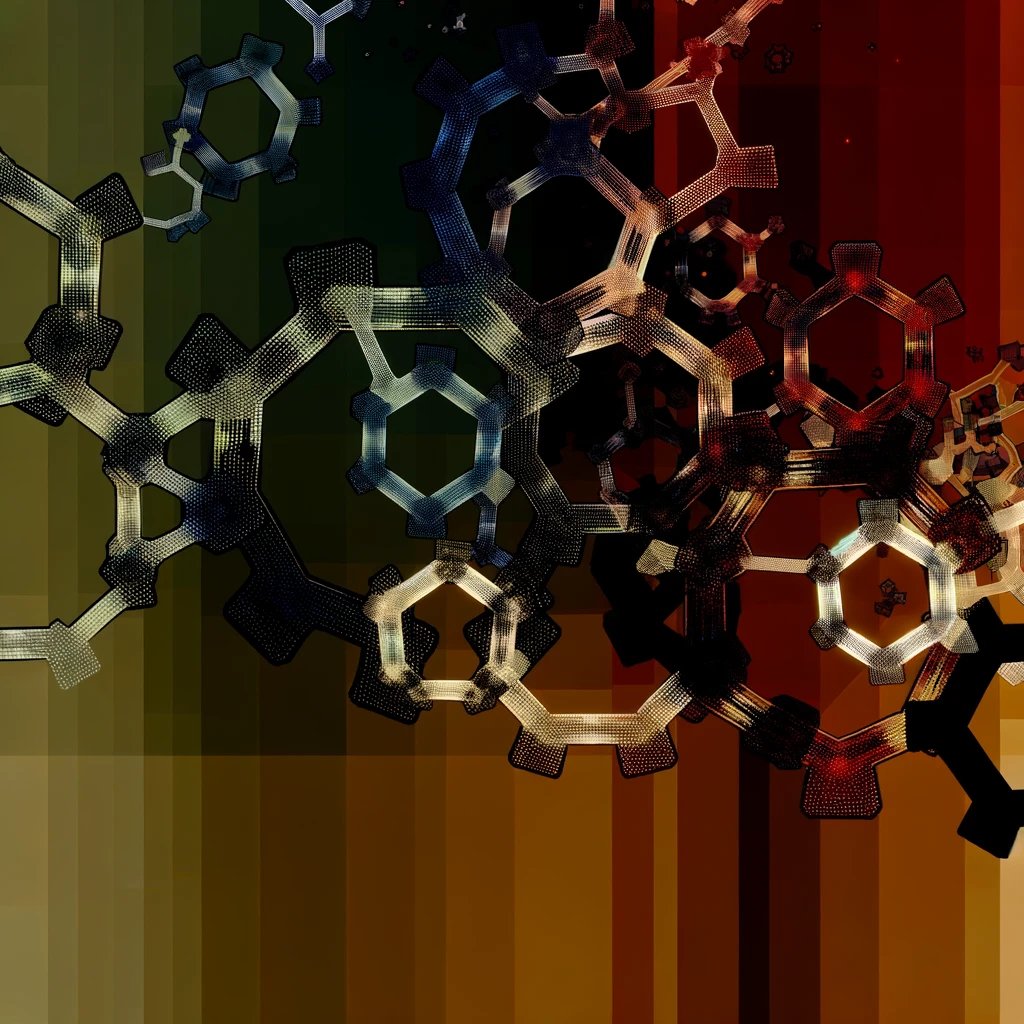Welcome to my blog!
Every morning, I begin with a cup of coffee and 15 minutes of free thinking. I write down everything that comes to mind, from new ideas to thoughts that emerged overnight. This is where I develop and refine my new research. You'll find some repetition and ideas still in progress. Some might seem unusual or unclear at first, but that's part of the journey! I'm excited to share how my ideas form and evolve.
Exploring the relationship between logic and language, and questioning whether this relationship ultimately leads to psychologism.
Examining the central role of language in Twentieth-century analytical philosophy and the relationship between language, thought, and logic.
Exploring the distinct roles of logic and mathematics in understanding material and conceptual coherence, and how each contributes to different domains of reasoning.
Examining the possibility of non-violent change in addressing epistemic oppression and the potential for a "quiet revolution" in rebalancing societal powers.
Exploring the limitations of traditional Marxist theory in addressing modern societal complexities and the emergence of epistemic powers that shape contemporary inequities.
Today, I have the great honour of having a friend and colleague, Dr. Padriac O'Leary, contributing to Logic in the Wild blog. Dr. O'Leary recently joined the Computer Science department at the University of Auckland after completing a Ph.D. in philosophy with Prof. Fred Kroon. Today, Padriac elaborates on the idea of "logical impressionism," delving into its role in preserving coherence in complex contexts and its distinction from formal logic and rhetoric.
Exploring the principle of the climber’s agreement in the climbing community and proposing a similar approach to coherence and understanding in logical discourse.
Exploring the intersection of social epistemology and logic, examining how knowledge and coherence are affected when perspectives are pooled in a community.
Boolean negation inherits the law of non-contradiction from mathematics, but does it also get the rule of explosion? Exploring the implications of Boolean negation for logical consistency and the potential for coherent reasoning in the presence of inconsistency.
Exploring how intersectionality challenges the concept of sex as a binary or spectrum and invites us to view it through a pluralistic manifold.
Exploring the intersection of practice and theory in logic, and how a richer approach enhances both.
Exploring Andrea Nye's critique of logic and the challenges of addressing gender symbolism in philosophical discourse.
Examining the historical exclusion of women from the domain of logic and how feminism reveals the unequal distribution of epistemic power and the fabrication of gendered reasoning.
Exploring how Ancient Greek notions of harmony reveal the essence of logical thinking as a pursuit of coherence, connecting music, mathematics, and the cosmos.
This post explores how the term ‘logic’ is used in various contexts, from political ideologies to natural processes, and questions whether it genuinely reflects logical reasoning in the scenarios it describes.
In this post, I explore the implications of the "Kiwi Before Iwi" slogan and its strict adherence to the logic of equality, questioning whether it truly serves justice or perpetuates inequality.
This post explores the distinctions between neutrality, equality, and equity in logical discourse, emphasizing the importance of creating a fair and inclusive space for dialectical enquiry. While neutrality aims for equal treatment, true equity ensures that all voices are heard and valued, preventing the erasure of marginalized perspectives.
This post explores David Lewis's theory of modal realism, which posits the existence of possible worlds to account for our modal discourse, and asks whether this view is coherent and cogent.
This post delves into the complex task of defining the self, examining the role of logic in providing coherence to our understanding of identity and presence in the world.
This post explores the intriguing connection between logical thinking and authenticity, suggesting that coherence rather than truth might be the key to understanding our true selves.
Exploring a concrete example of logic in everyday life, this post challenges the perception of logic as an emotionless, external tool. It highlights how logic protects us by guarding coherence in reasoning, rather than dictating surprising, non-human decisions.
This post explores the principle of charity in argumentation, emphasizing the importance of interpreting others' arguments generously and the role of logic in fostering charitable discourse.
This post explores the necessity of logic in community development, highlighting how logical interaction fosters a neutral space for dialectical enquiry, enabling diverse perspectives to find common ground without imposing majority beliefs.
In this post, I explore how epistemic structures, akin to Kuhn's scientific paradigms, can become oppressive logical monsters. These structures, passed down through generations, resist change and contribute to systemic injustice. Can seeking coherence in dialectical enquiry offer a path to overcoming cultural incommensurability and fostering better communication across paradigms? Is a Kuhnian analysis the right approach to understand epistemic oppression?
Short description: This post explores the concept of "emerging structural oppression," examining how power structures evolve and perpetuate systemic and epistemic oppression, with a focus on the role of logic in reinforcing these injustices.
his post explores how logic can be systemically oppressive, drawing on the works of Fricker, Dotson, and Mills to examine the intersection of epistemic injustice, white ignorance, and the inertia of dominant epistemic systems.
This post asks why we keep interrupting each other. Is it out of good intentions? Learn how a simple trick of posing uptake questions can help us do better.
This post explores the importance of engaging with a logical mindset in discussions, using a personal experience to illustrate how logical enquiry can foster constructive communication.
This post explores whether logical injustice is a distinct kind of injustice or if it is reducible to social injustice, drawing parallels with epistemic and hermeneutical injustices.
Examining the ways populism exploits incoherence and bad logic to make truth irrelevant, and the dangers this poses to political discourse.
Examining the possibility of non-violent change in addressing epistemic oppression and the potential for a "quiet revolution" in rebalancing societal powers.
Exploring the limitations of traditional Marxist theory in addressing modern societal complexities and the emergence of epistemic powers that shape contemporary inequities.
This post explores how the term ‘logic’ is used in various contexts, from political ideologies to natural processes, and questions whether it genuinely reflects logical reasoning in the scenarios it describes.
In this post, I explore the implications of the "Kiwi Before Iwi" slogan and its strict adherence to the logic of equality, questioning whether it truly serves justice or perpetuates inequality.
This post challenges the rapid-fire nature of social media interactions and proposes the concept of "logic duty" as a civic responsibility to deliberate on societal issues, encouraging deeper understanding and coherent decision-making beyond the divisive echo chambers.
This post explores how learning logic not only sharpens individual reasoning and debate skills but more importantly serves as a foundational tool for fostering societal cohesion and constructive dialogue.
This post discusses the nuanced question of whether accusations of racism can themselves be racially motivated, especially in light of recent criticisms by NZ political leaders against designated spaces for Māori and Pacifica students.
This blog addresses the contentious debate surrounding designated spaces for Māori and Pacifica students at The University of Auckland, refuting accusations of racism with a nuanced discussion on community, identity, and the tu quoque fallacy.
This blog post is a response to Winston Peters' "state of the nation" speech, focusing on his incoherent analogy between the Labour Party and Nazi Germany, and and denouncing his deployment of inflammatory demagogical rhetoric in prominent New Zealand's political discourse.
This post examines how demands for equity by marginalized groups are often misinterpreted as calls for special treatment, particularly when these groups are ethnic minorities, using a notable speech by Don Brash as a case study.
This post critiques the divisive rhetoric of New Zealand's political leaders, urging a more mature approach to discourse while preserving the passionate critique embedded in the original argument.
This post explores the nuanced dynamics of group versus individual accountability, particularly in historical and social justice contexts, emphasizing the complexity of attributing actions and consequences across different societal levels.
This post explores how the interpretation of the Treaty of Waitangi's translations can lead to a form of oppression through the imposition of foreign logical frameworks on Māori concepts, using the term 'tikanga' as a key example.
In this post, we examine abstract equality through logic and its potential to overlook the experiences of marginalized groups.
Exploring the value of a father's advice, "Shut up and listen!", this post urges leaders to embrace active listening in the context of Waitangi weekend.
This post explores how narrowing our focus from broad generalizations to specific groups reveals deeper truths and addresses social inequities.
Is societal justice about treating everyone identically, or does it demand a more nuanced, equitable approach?
This post explores the tension between logical neutrality and the erasure of individual identities in New Zealand's political landscape, examining the implications for Māori communities.
Exploring the crucial role of logical integrity in political decision-making, this post examines the varied application of logic in politics through the case of New Zealand Prime Minister Christopher Luxon's early actions and statements, emphasizing the need for consistent logical reasoning in governance.
This piece delves into the nuanced spectrum between competition and cooperation, questioning traditional views of these concepts and exploring their roles in both natural and human-made systems.
In this post, I explore the forest as a metaphor for competition and cooperation, contrasting the individualistic struggle for resources with the collaborative symbiosis of the ecosystem, and introducing relational ontology as a holistic view that transcends these dualities.
This blog delves into the concept of relational identity, drawing from Māori philosophy and Anne Salmond's work, to explore how identity extends beyond personal confines and encompasses a holistic network of relationships, particularly within the LGBTQ+ community.
Exploring the principle of the climber’s agreement in the climbing community and proposing a similar approach to coherence and understanding in logical discourse.
This post explores the principle of charity in argumentation, emphasizing the importance of interpreting others' arguments generously and the role of logic in fostering charitable discourse.
Exploring logical injustice, the post emphasizes the importance of using appropriate logical standards in everyday discussions and decision-making.
Drawing from the traditional principle of charity, I introduce the Principle of Logical Charity, encouraging the treatment of others' views as both intelligent and logically coherent in conversations.
In this blog post, I explore how my journey as a logician, initially focused on abstract content, evolved to embrace real-world interactions, from teaching diverse students to considering feminist critiques and the nature of metaphysics and mathematics.
Exploring the distinct roles of logic and mathematics in understanding material and conceptual coherence, and how each contributes to different domains of reasoning.
Exploring how Ancient Greek notions of harmony reveal the essence of logical thinking as a pursuit of coherence, connecting music, mathematics, and the cosmos.
This post explores how the term ‘logic’ is used in various contexts, from political ideologies to natural processes, and questions whether it genuinely reflects logical reasoning in the scenarios it describes.
This post delves into the complex task of defining the self, examining the role of logic in providing coherence to our understanding of identity and presence in the world.
This post explores the intriguing connection between logical thinking and authenticity, suggesting that coherence rather than truth might be the key to understanding our true selves.
Exploring a concrete example of logic in everyday life, this post challenges the perception of logic as an emotionless, external tool. It highlights how logic protects us by guarding coherence in reasoning, rather than dictating surprising, non-human decisions.
his post explores how logic can be systemically oppressive, drawing on the works of Fricker, Dotson, and Mills to examine the intersection of epistemic injustice, white ignorance, and the inertia of dominant epistemic systems.
This post explores whether logical injustice is a distinct kind of injustice or if it is reducible to social injustice, drawing parallels with epistemic and hermeneutical injustices.
This blog post introduces the concept of logical injustice, exploring its parallels with epistemic and hermeneutical injustices, and discusses how failing to appreciate the coherence in someone's thoughts constitutes this new form of injustice.
In this blog post, I propose the rule of trivialisation as a generalisation of the logical rule of Explosion, and I discuss difficulties in finding practical ways of using it. I question whether absurdity could provide a new metric for assessing logical coherence.
This blog post discusses the rule of explosion in logic, which posits that from any contradiction, everything follows—resulting in what is known as triviality. I explore the limitations of this principle and introduce a nuanced approach termed 'trivialisation' that seeks to redefine how we measure coherence without insisting on strict consistency.
This blog post explores the intricate relationship between logical and conceptual choices, questioning whether decisions based solely on definitions can exist independently of logical connections, and how logic imposes boundaries on conceptual behavior.
This blog post discusses the principle of explosion in logic, exploring how it traditionally mandates that any contradiction leads to everything becoming true, and why some modern logicians choose to reject this rule to handle inevitable contradictions more gracefully.
This post examines how logic extends beyond mere truth-seeking, illustrating its role in understanding coherence in historical scientific theories and contemporary societal debates, from ancient optics to modern sports equity.
This post examines the transition from the symbolic complexities of logic to its practical applications in daily life, questioning how deeply the principles of logical theory influence our everyday reasoning.
Exploring the role of logic in enhancing personal understanding and improving community interactions, facilitating a bridge between differing perspectives.
This post explores the deep-seated issues of epistemic injustice faced by queer and trans individuals, highlighting the pivotal role of language and community in affirming identity and the dire consequences of its absence.
This blog post is a response to Winston Peters' "state of the nation" speech, focusing on his incoherent analogy between the Labour Party and Nazi Germany, and and denouncing his deployment of inflammatory demagogical rhetoric in prominent New Zealand's political discourse.
In this post, the Logic in the Wild framework is employed to refresh feminist critiques of logic, steering away from evolutionary simplifications and gender symbolism errors.
Exploring a friend's journey with Jesus, this post reveals how his faith leads to a profound appreciation for the beauty in every individual, transcending traditional religious divides.
This post explores the ethical implications of logical coherence through the lens of Viktor Bout's life, illustrating how logic's misuse can lead to morally questionable outcomes.
Exploring the value of a father's advice, "Shut up and listen!", this post urges leaders to embrace active listening in the context of Waitangi weekend.
Can harmony be considered as a guardian of coherence?
This post explores the intersection of logic and empathy in understanding others, highlighting the limitations of empathy in our socially fragmented world and the role of logic as a 'guardian of coherence'.
In this post, I explore how changing content in a farcical setting, as shown in "Happiest Season," dramatically shifts its narrative impact from comedy to tragedy, prompting reflection on what this teaches us about logic and coherence when contexts are altered.
In this post, I examine Barbie's pearl of wisdom from her latest movie, revealing the enriching balance between logic and emotion.
o conclude a provocative blog week, this post defends dialetheism, weaving together this unique philosophical perspective with the ideas of validity as a social construct and logical nihilism.
Revisiting the concept of validity as a social construct, this post incorporates insights from Gillian Russell and logical nihilism, enhancing the understanding of logic as 'the guardian of coherence' in 'Logic in the Wild'.
Logic in the Wild argues against the conventional formal/informal logic divide, showcasing logic as a multifaceted guardian of coherence across various domains.
Exploring the crucial role of logical integrity in political decision-making, this post examines the varied application of logic in politics through the case of New Zealand Prime Minister Christopher Luxon's early actions and statements, emphasizing the need for consistent logical reasoning in governance.
This post explores the intersection of logic and empathy in understanding others, highlighting the limitations of empathy in our socially fragmented world and the role of logic as a 'guardian of coherence'.
o conclude a provocative blog week, this post defends dialetheism, weaving together this unique philosophical perspective with the ideas of validity as a social construct and logical nihilism.
This post examines the challenging demands of empathy in a polarized world and proposes logic as a vital tool to bridge understanding and foster empathy amidst diverse viewpoints.
Explore how the social constructs of sex, race, homosexuality, and heterosexuality are shaped by societal norms and scientific inquiry, revealing the intricate ways in which our understanding of identity is formed and challenged within the evolving landscapes of society and science.
Exploring the intricate link between gender identity and biological sex, this post investigates how societal constructs around 'man/woman' influence our understanding of the 'male/female' distinction. It questions the origins of social pressure that shapes our perceptions, challenging us to rethink the boundaries between biological realities and cultural expectations.
Highlighting the realization that societal pressures can lead science to alter its definitions, this post ventures into the intricate relationship between biology, astronomy, and the social constructs of sex and planetary classification.
Today, I have the great honour of having a friend and colleague, Dr. Padriac O'Leary, contributing to Logic in the Wild blog. Dr. O'Leary recently joined the Computer Science department at the University of Auckland after completing a Ph.D. in philosophy with Prof. Fred Kroon. Today, Padriac elaborates on the idea of "logical impressionism," delving into its role in preserving coherence in complex contexts and its distinction from formal logic and rhetoric.
Exploring the relationship between logic and language, and questioning whether this relationship ultimately leads to psychologism.
Examining the central role of language in Twentieth-century analytical philosophy and the relationship between language, thought, and logic.
Examining the possibility of non-violent change in addressing epistemic oppression and the potential for a "quiet revolution" in rebalancing societal powers.
Exploring the limitations of traditional Marxist theory in addressing modern societal complexities and the emergence of epistemic powers that shape contemporary inequities.
Exploring the intersection of social epistemology and logic, examining how knowledge and coherence are affected when perspectives are pooled in a community.
Boolean negation inherits the law of non-contradiction from mathematics, but does it also get the rule of explosion? Exploring the implications of Boolean negation for logical consistency and the potential for coherent reasoning in the presence of inconsistency.
Exploring the intersection of practice and theory in logic, and how a richer approach enhances both.
Exploring Andrea Nye's critique of logic and the challenges of addressing gender symbolism in philosophical discourse.
Examining the historical exclusion of women from the domain of logic and how feminism reveals the unequal distribution of epistemic power and the fabrication of gendered reasoning.
Exploring how Ancient Greek notions of harmony reveal the essence of logical thinking as a pursuit of coherence, connecting music, mathematics, and the cosmos.
This post explores David Lewis's theory of modal realism, which posits the existence of possible worlds to account for our modal discourse, and asks whether this view is coherent and cogent.
This blog post explores the role of logic as an epistemic tool, clarifying that while it does not directly determine truth, it is crucial in structuring knowledge. The discussion also touches on the concept of epistemic injustice and how denying logical tools can perpetuate systemic biases.
This post challenges the rapid-fire nature of social media interactions and proposes the concept of "logic duty" as a civic responsibility to deliberate on societal issues, encouraging deeper understanding and coherent decision-making beyond the divisive echo chambers.
This post examines how logic extends beyond mere truth-seeking, illustrating its role in understanding coherence in historical scientific theories and contemporary societal debates, from ancient optics to modern sports equity.
This post explores the perceived divide between the complex theories of formal logic and the practical logic we employ daily, bridging the gap between specialized academic knowledge and everyday reasoning.
This blog post explores Miranda Fricker's concept of testimonial injustice, examining whether epistemic injustice is appropriate unless knowledge is somehow objective.
Exploring a friend's journey with Jesus, this post reveals how his faith leads to a profound appreciation for the beauty in every individual, transcending traditional religious divides.
Exploring the depth of coming out, this post argues it encompasses far more than sexual preferences, embodying a rich identity and presence within the community.
Demonstrating how logic, as the guardian of coherence, directly led to the invention of the modern computer, transforming abstract theories into the foundation of today's technology.
This post explores classical logic, not as the logic of ancient times, but as a twentieth-century European development, focusing on its evolution from public debate tools to the formal languages shaping modern mathematics.
This post challenges the conventional understanding of evolutionary success, exploring the logical fallacies often embedded in patriarchal frameworks of biological interpretation.
This blog post challenges the prevalent notion that logic is alien to human nature, suggesting instead that it is an intrinsic tool evolved from our limitations.
After watching "Oppenheimer," a film about a pivotal scientific development, I'm inspired to share a thought-provoking quote from Rev. Māori Marsden's "The Woven Universe," offering a unique perspective on this historical moment.
In this post, I explore how changing content in a farcical setting, as shown in "Happiest Season," dramatically shifts its narrative impact from comedy to tragedy, prompting reflection on what this teaches us about logic and coherence when contexts are altered.
This post explores the challenges and potential solutions in addressing intersectional oppression through the lens of top-down and bottom-up logical approaches, inspired by the limitations of ceteris paribus logic in social contexts.
Exploring the WSCM equation, this post navigates through how upward and downward dynamics of oppression and privilege redefine intersectionality and call for a unified approach to social justice.
This post challenges the long-standing myths that marginalized groups possess lesser intellect, using intersectionality to highlight the absurdity of such claims.
This post explores the tension between logical neutrality and the erasure of individual identities in New Zealand's political landscape, examining the implications for Māori communities.
I examine the 'same logic, same response' slogan, focusing on its limitations.
The Struggle of Intersectional Logic: Top-Down vs. Bottom-Up Approaches
This post explores the challenges and potential solutions in addressing intersectional oppression through the lens of top-down and bottom-up logical approaches, inspired by the limitations of ceteris paribus logic in social contexts.
In a previous blog, I highlighted the pitfalls of employing ceteris paribus logic within social contexts. This type of logic, though prevalent in scientific inquiry for isolating variables, falters in social analysis by its very nature of holding factors constant, inadvertently obscuring the multifaceted oppression experienced by marginalized groups.
The dilemma emerges starkly when we consider isolated variables separately—gender and race, for instance. At first glance, in a given context, it may appear that women, as a broad category, do not face oppression in comparison to men, and similarly, people of colour might not seem oppressed when compared to their white counterparts. However, this perspective fails to illuminate the unique struggles of women of colour, who endure oppression at the intersection of both race and gender—a reality that remains hidden under the ceteris paribus approach.
This brings us to an important realization: in the realm of social sciences, there are no universal generalizations. Nancy Cartwright's analysis underscores that generalizations in science, at best, are ceteris paribus—yet even these are inadequate, as they erase the experiences of intersectionally marginalized groups.
So, what path should we tread? One strategy involves subdividing our categories further to acknowledge and compare subgroups, such as women of colour, against others. This method, however, quickly becomes unwieldy due to the sheer number of potential comparisons—growing exponentially with each additional variable considered, thereby multiplying the complexity of addressing each axis of oppression.
An alternate approach seeks broader variables that capture patterns of oppression transcending specific axes, such as gender or race. Here, the work of Val Plumwood offers a beacon of hope. Plumwood's analysis of dualities through conditions like backgrounding and maximal separation aims at a holistic understanding of oppression's patterns, beyond the binary oppositions like master/slave, man/woman, or human/nature.
Yet, this quest for a generalized understanding of oppression confronts its own set of challenges. Achieving a non-trivial consensus that respects the nuances of critical theories—including feminism, queer theory, and gender studies—risks ending in overly simplistic solutions that scarcely address the complexity of intersectional oppression.
The predicament is both difficult and uncomfortable: segmenting into narrower groups risks fragmenting potential alliances, while seeking unity can lead to a superficial grasp of the issues at hand. This delicate balancing act between division and unity underscores the ongoing struggle to find meaningful ways to confront and dismantle intersectional oppression, fostering a dialogue that acknowledges the full spectrum of human experience.
The WSCM Equation: A Hermeneutical Perspective on Intersectionality and Unity in Social Critique
Exploring the WSCM equation, this post navigates through how upward and downward dynamics of oppression and privilege redefine intersectionality and call for a unified approach to social justice.
In this exploration, I aim to apply what I refer to as upward-downward hermeneutics to the WSCM equation. Hermeneutics, traditionally understood as the art and science of interpretation, is used to explore and elaborate on the meaning of complex layers of social dynamics and power structures. By 'upward-downward,' I refer to the process of distinguishing between the impacts of societal structures on individuals (downward) and how individual actions and perceptions in turn shape these structures (upward). This method is pivotal in clarifying the distinct roles that macro-level societal forces and micro-level personal actions play, addressing the often misleading conflation of these levels in public discourse.
The concept of "downward" dynamics focuses on intersectional concerns of oppression, highlighting how these forces compound along their intersections. For instance, within a patriarchal society, women face a certain degree of oppression, as do people of colour. However, women of colour encounter a unique form of oppression that goes beyond the mere sum (addition) of their identities; they experience "multiplicative oppression" – an enhanced burden specific to their intersectional identity as women of colour.
Conversely, "upward" dynamics involve the reactions from dominant groups who, enjoying privileges associated with being white, straight, cisgender, and male, may feel a compounded sense of guilt from each axis of oppression. This guilt manifests in defensive responses, exemplified by slogans such as #AllLivesMatter and #NotAllMen. A potential limitation of framing the issue in terms of upward and downward dynamics is that it may oversimplify the complex interplay of power, suggesting oppression is merely an issue of direct interactions between individuals, like Bill oppressing Joe. However, my aim is to elevate the discussion to a group level, where intersectional concerns underscore that addressing axes of oppression in isolation (ceteris paribus) inadvertently sidelines some marginalized groups.
This idea is encapsulated in the slogan "feminism is for white women, race theory for black men," indicating that when feminist and race theory critiques are pursued in parallel without considering their intersections, the unique challenges faced by groups like women of colour remain overlooked.
The term "intersection" itself, while commonly used to describe these dynamics, may inadvertently support a divisive, "divide and conquer" approach to social justice. Instead, I propose viewing the WSCM equation as a representation of the union of critical theories—including post-colonial studies (W), queer theory (S), trans theory (C), and feminism (M)—each a specialization within social discourse and academic research that often operates in silos, with minimal cross-pollination.
The WSCM equation seeks to amalgamate the insights gleaned from critiques of social oppression across these fields, pointing to a shared critique in the distribution of power within society. This, in turn, suggests a path towards a more generalized and unified action against social injustice.
Shattering Myths of Intellect: Insights from Intersectionality
This post challenges the long-standing myths that marginalized groups possess lesser intellect, using intersectionality to highlight the absurdity of such claims.
It's a common, yet profoundly mistaken belief that people from marginalized groups have lesser intellects. This misconception has roots that run deep, tracing back to historical figures like Aristotle, who erroneously claimed women were less rational than men. This belief persisted through the centuries, finding refuge in religious institutions, academia, and even within the confines of home.
Sojourner Truth, in one of the most celebrated American speeches of the 19th century, employed logical reasoning to challenge this notion. She posited that if women truly had lesser minds, men ought not to fear their education. In Logic in the Wild, I delve into how Truth ingeniously used logic in a dialectical space of inquiry to make her point.
The accusation of lesser intellect has not been limited to women alone. Non-European peoples, people of color, indigenous populations, and, with the advent of psychiatry, queer individuals have all been unjustly placed on a hierarchical scale of intellect with European white men erroneously positioned at the top.
Each of these dismissals of marginalized groups' intellect represents a distinct chapter in European history, yet all share a common thread significant enough to transform these false beliefs into widely accepted tenets.
Reflecting on the accumulation of these accusations, one might wonder about the position of someone who intersects several oppressed groups, such as a queer woman of color. Where does she stand on this erroneous hierarchical scale of intellect? This question illuminates the issue brightly, emphasizing the absurdity of such arbitrary discrimination.
Intersectionality, a branch of critical theory, examines how considering sources of oppression in isolation—a ceteris paribus approach—tends to discriminate further against some individuals. For instance, addressing oppression towards women while holding other variables constant leaves women of color and queer women in a limbo of residual oppression, challenging to articulate and gain recognition for.
My argument is not merely that intersectional concerns unveil previously unnoticed types of oppression but that they also provide compelling counterexamples to the baseless claims that marginalized groups possess lesser intellect. If it were true that women, people of color, and queer individuals had lesser intellects, logic would dictate that those at the intersection of these identities would possess scarcely any intellect at all—an assertion that is not only false but patently absurd.
Therefore, intersectionality not only sheds light on the multifaceted nature of oppression but also offers potent insights into debunking discrimination based on intellect. By recognizing the complexity of individual identities, we can begin to dismantle the unfounded hierarchies that have plagued societal perceptions for far too long.
"Kiwi before iwi": Exploring Logic and Identity in New Zealand's Political Landscape
This post explores the tension between logical neutrality and the erasure of individual identities in New Zealand's political landscape, examining the implications for Māori communities.
This weekend, a significant gathering occurred: a hui attended by 10,000 people, convened by Kiingi Tuheitia, the Māori King. The purpose was to address the Coalition Government's policies on te reo and the Treaty of Waitangi. NZ First MP Shane Jones made a statement to Newshub: "The Government is focused on the interests of every single Kiwi rather than every single iwi." This sentiment echoes the old dichotomy of “Kiwi vs iwi” or “Kiwi before iwi”.
In my book, "Logic in the Wild," I argue that logic provides a neutral space for dialectical inquiry. However, there's a darker aspect to this abstraction: it can lead to the erasure of individual identities. The National government's stance of governing for “every” Kiwi ostensibly aims to unite rather than divide, suggesting that equality at the individual level avoids exclusion or favouritism. In logical terms, when the government speaks of “every Kiwi”, they are quantifying over individuals. To attain equality at this granular level, individuals must be rendered as neutral as possible.
As a logician, I am well-versed in this practice of generalising across domains. Logic aims for such a degree of generality that the entities within its domains of quantification become arbitrary. This is akin to a method in science, which I discuss in "Logic in The Wild," called ceteris paribus reasoning. This method abstracts away from interfering factors when formulating laws. For example, when Newton formulated his laws of motion, he idealised the scenario to just two bodies, a “sun” and a “planet,” treating them as mathematical points rather than celestial bodies.
This approach, while achieving generality, necessitates the erasure of individual specificity, treating entities as mere points. Members of parliament who advocate for an individualistic neo-liberal society find comfort in this “every Kiwi” domain, as their identity and social circumstances already align with the required neutrality. However, the challenges faced by iwis and Māori in our society are not evenly distributed among individuals. Systemic oppression manifests in various forms – poverty, health issues, substance abuse, severe mental health problems – and these are not uniformly experienced. This oppression cannot be reduced to the sum of individual experiences; it operates at a group level.
Thus, striving for neutrality at the individual level, as encapsulated in the phrase “every Kiwi”, inadvertently suppresses the recognition of oppression that affects iwis. It erases identities that are crucial to understanding the lived experiences of those facing oppression, forcing them into a framework of neutrality that is alien to their reality.
Reevaluating the Slogan: The Pitfalls of 'Same Logic, Same Response’
I examine the 'same logic, same response' slogan, focusing on its limitations.
It’s time we reconsider the slogan “same logic, same response”. Currently, it struggles to effectively communicate what I aim to express. When taken literally, albeit with necessary qualifications, the slogan is misleading. I fear an overreliance on numerous caveats might lead to ad hoc justifications, which is not ideal. Let's delve into this.
The statement is inaccurate when interpreted literally, as logic alone doesn’t encapsulate the entirety of an argument's quality. An argument can be logical yet still flawed due to its false premises. Consider a frivolous example: "All logicians are unicorns. Patrick is a logician. Therefore, Patrick is a unicorn." This represents a valid argument, hence logically impeccable, but it's fundamentally flawed because the premise is untrue – no logician is a unicorn. Another argument with identical logical structure might be sound if its premises are true. For instance, “All humans are mortal. Patrick is a human. Therefore, Patrick is mortal.” Although these two arguments share the same logical framework, I don’t anticipate an identical response to both. I hope to have not convinced you of my mythical status, but I can assure you, I am indeed mortal.
So, the first caveat: by "the same response", I refer to an identical logical evaluation. This means assessing whether the premises logically support the conclusion. Both cited examples are valid, and thus, from a logician’s perspective, they are equally logical. This pertains specifically to deductive reasoning, where the standards are centered around validity.
In non-deductive scenarios, additional caveats are required, as context influences logical support. Non-deductive contexts are marked by more flexible logical standards, focusing on argument strength rather than validity. The premises here do not fully guarantee the conclusion, allowing a margin for error, which varies according to the context. Take this example: "90% of Aucklanders are zombies. Patrick is an Aucklander. Therefore, Patrick is a zombie." What are the odds of Patrick being a zombie based solely on the given premises? 90%, seemingly. It’s a probable hypothesis, though not certain. However, if new information emerges – say, no zombies have yet reached Waiheke Island, and Patrick resides there – the likelihood of Patrick being a zombie drops significantly.
This leads to the need for another caveat in non-deductive contexts. My colleague proposed incorporating a 'ceteris paribus' clause, modifying the slogan to “same logic, same response, all else being equal.” What exactly needs to remain constant? As I’ve elaborated in "Logic in the Wild", this is a complex issue, which I invite you to explore further in the book for a comprehensive understanding of 'ceteris paribus logic'.
For the purposes of this post, we can simplify it to mean that the information surrounding the premises should remain equal. If the only information available is that within the premises, with no external data, we attain a greater degree of logical stability across various contexts, including in non-deductive reasoning.
An application of this principle can be seen in political discourse. For instance, when critiquing the Prime Minister's lack of what I term 'meta-coherence' (a concept for another post) in handling cigarettes and cannabis policies, this principle comes into play. If the rationale for not reducing cigarette sale outlets is to avoid a black market, a similar logical approach should apply to cannabis, ceteris paribus. However, as expected, counterarguments often highlight dissimilarities in context, as exemplified by Luxon's “different story, different effects” response.
Hence, the second caveat: the context of evaluation must remain equal. Of course, one might argue, as Luxon did, that the contexts are not equal. This illustrates the need for further caveats, potentially leading to an unwieldy number of ad hoc qualifications for the "same logic, same response" slogan.
I'll leave the discussion here for now, intending to revisit and potentially reformulate this slogan in a future post. There’s much more to unpack, but for now, I must attend to other matters.
























































































Examining the ways populism exploits incoherence and bad logic to make truth irrelevant, and the dangers this poses to political discourse.